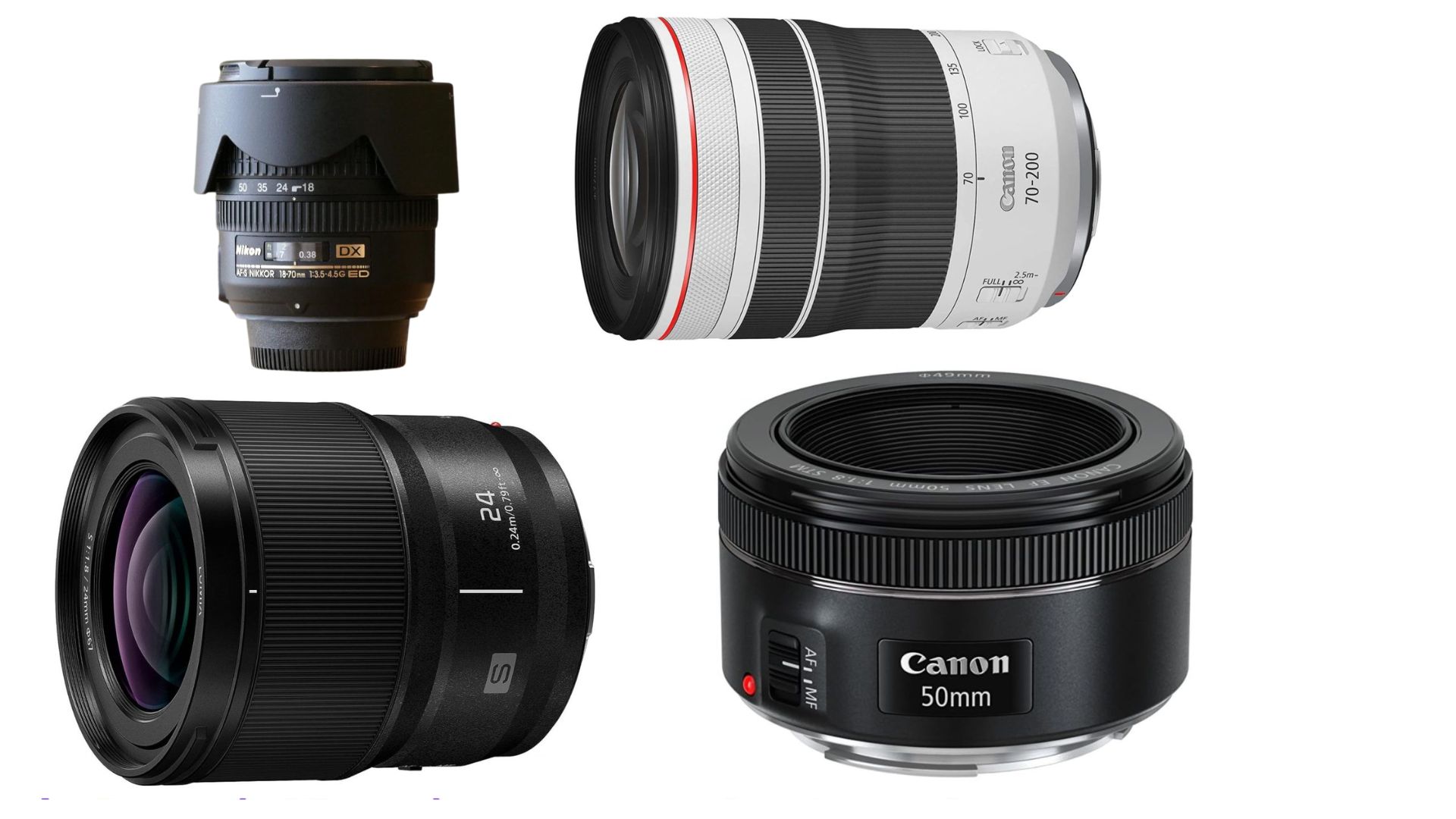Are you new to the photography world and confused about how many lenses and What Lenses Should Every Photographer have? If yes, you have landed just on the right page.
The variety of available lens options with different focal lengths makes photography critical. But do you really need all types of lenses to bring professional photography? The answer is a Big No. With some basic lenses, you can easily capture excellent photographs like a pro. However, for more versatile options, you can add more lenses to your collection. Yet, if you are not ready to invest in the entire lens set, here are the four basic lenses that you should have as a photographer-
Four Must-Have Lenses For Photographer
I have listed four must-have lenses you should have as a photographer in this section. However, before selecting any of these lenses, check what type of camera you are using. The lens requirement varies for different cameras; all cameras are not compatible with every lens category. Once you have noted down your camera’s brand and the type of lenses it supports, check the below suggestion to pick the best option for you –
1. Standard Zoom Lens (~18-70mm)
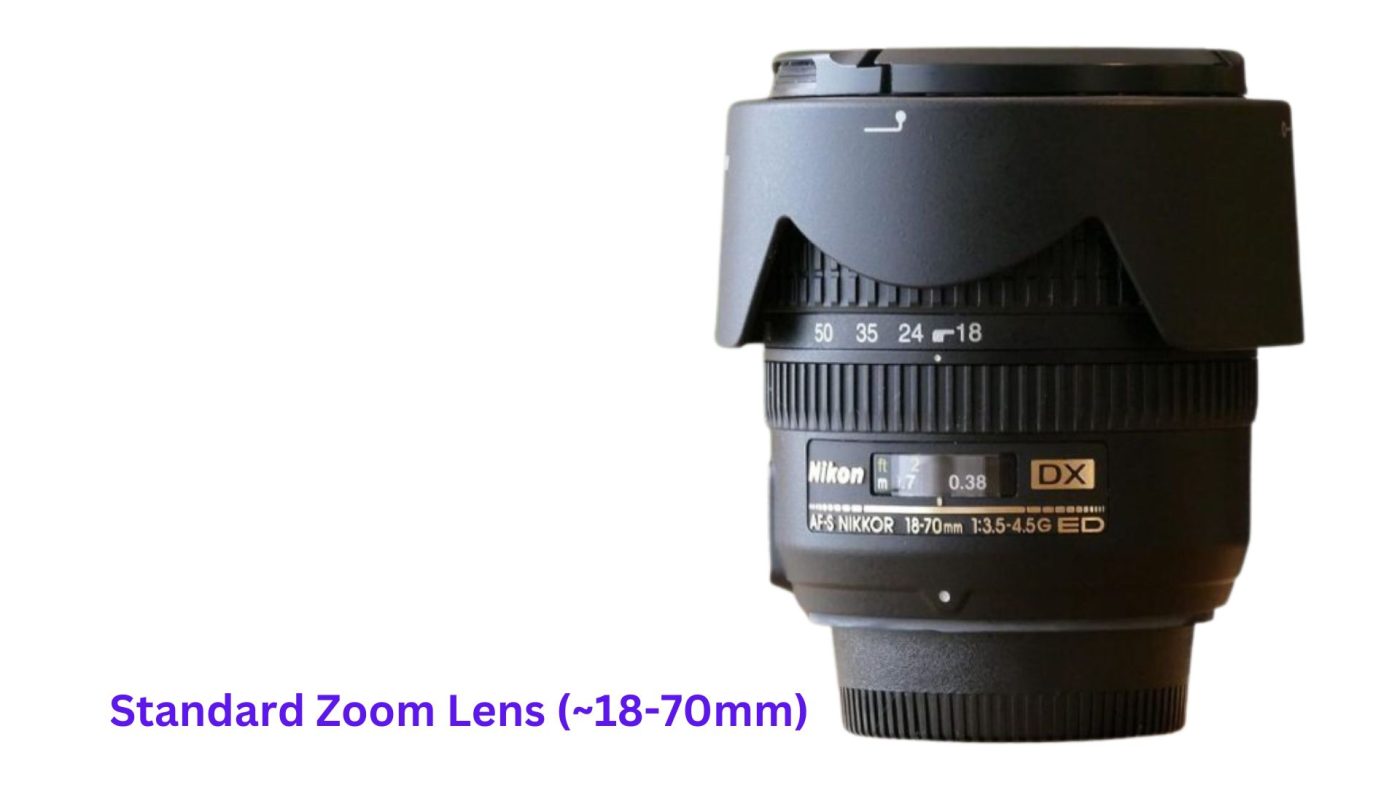
A standard zoom lens, also known as general-purpose zoom, is the basic camera lens that all photographers must have. If you are a beginner, start with this lens. This is a versatile option that offers a wide range of focal lengths.
Standard zoom lenses have a focal length ranging between 18-70mm. You can capture more scene elements in the frame with lower focal lengths. A higher focal length is used to capture closer shots of the subject.
When purchasing standard zoom lenses, you will find two varying ranges; 18-70mm; the expensive one, and 24-70mm; more reasonable than the previous option. You can use these lenses for general photography. If you don’t want to invest in multiple lenses, purchasing a standard zoom lens is your best option. Types of shots you can take using these lenses are as follows-
- Tighter portraits in the 60mm+ range
- Street shots at 50mm
- Environmental portraits at 24mm, and
- Landscape shots at 18mm.
Here are some suggestions for standard zoom lenses for the most popular camera brands-
| Standards Lens Recommendation | |
| Camera Brand | Recommended Models For Lens |
| Canon | Canon EF 24-70mm f/2.8L II USM (DSLR) Canon RF 24-70mm f/2.8L IS USM (Mirrorless) Canon EF-S 17-55mm f/2.8 IS USM (APS-C DSLR) |
| Sony | Sony FE 24-70mm f/2.8 GM (Full Frame Mirrorless) Sony E 16-55mm f/2.8 G (APS-C Mirrorless) |
| Panasonic | Panasonic Lumix S PRO 24-70mm f/2.8 (Full Frame Mirrorless) Panasonic Lumix S 20-60mm f/3.5-5.6 (Full Frame Mirrorless) |
| Nikon | Nikon AF-S NIKKOR 24-70mm f/2.8E ED VR (DSLR) Nikon NIKKOR Z 24-70mm f/2.8 S (Mirrorless) |
2. Telephoto Zoom Lens (~70-200mm)
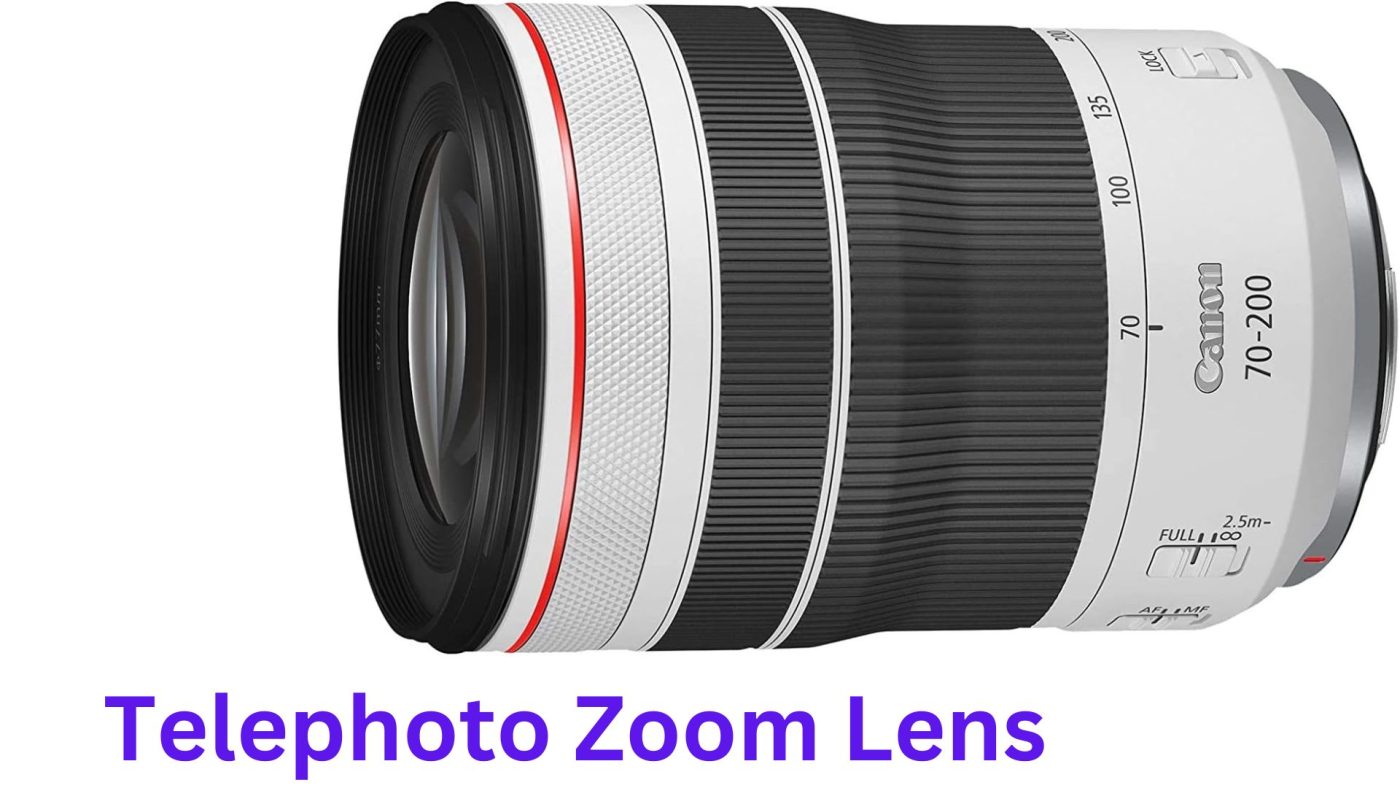
If you are into sports or wildlife photography, you must have a telephoto zoom lens. These lenses have a focal length ranging from 70mm to 200mm. So, you can shoot impressively detailed photographs at full-focal length using these lenses. But it is not very effective for tighter spaces.
Compared to standard zoom lenses, telephoto zoom lenses are much larger in size. However, depending on your specific needs and budget, you can choose between an f/4 and an f/2.8 aperture. If you are looking for better low-light performance and faster shutter speeds, I suggest you purchase an f/2.8 aperture. But if portability is your utmost priority, go for f/4 versions. They are more compact and lightweight in comparison to the f/2.8 ones. The categories of photographs you can click using this lens includes-
- Full-body portraits at 70mm
- Tighter landscapes at 150mm, and
- Headshots at 200mm
In the below chart, I’ve added some recommendations for telephoto zoom lenses for different camera brands-
| Telephoto Zoom Lens Recommendation | |
| Camera Brand | Recommended Models For Lens |
| Canon | Canon EF 70-200mm f/2.8L IS III USM (DSLR) Canon RF 70-200mm f/2.8L IS USM (Mirrorless) |
| Sony | Sony FE 70-200mm f/2.8 GM OSS Sony FE 70-200mm f/4 G OSS |
| Panasonic | Panasonic Lumix S PRO 70-200mm f/2.8 O.I.S. Panasonic Lumix S 70-200mm f/4 O.I.S. |
| Nikon | Nikon AF-S NIKKOR 70-200mm f/2.8E FL ED VR Nikon Z 70-200mm f/2.8 VR S (Mirrorless) |
3. Prime Lens (~50mm)
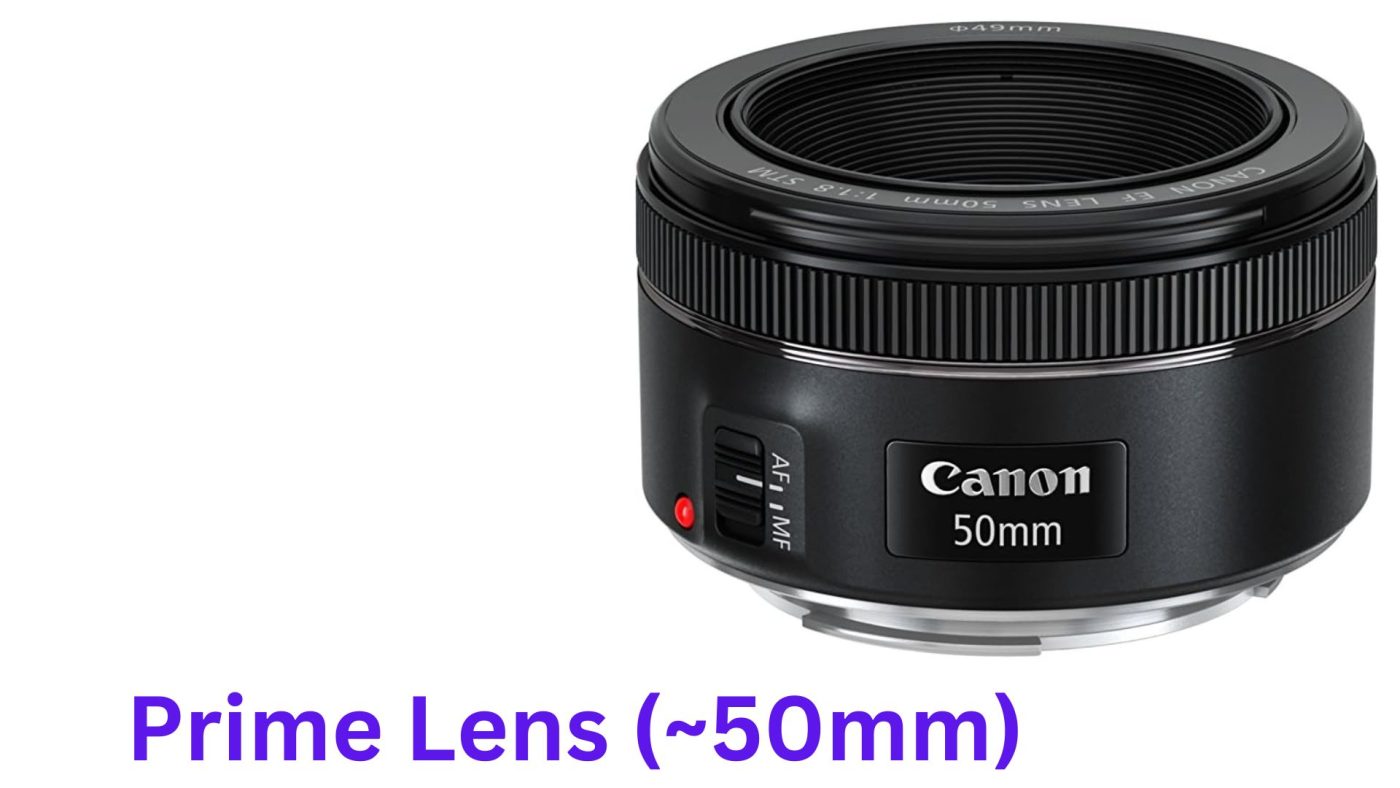
Prime lenses are different from zooming lenses like standard or telephoto zoom lenses. They come with a fixed focal length of 50mm and no zooming facilities. These lenses can give you better image quality than zooming lenses due to having fewer optical elements.
These prime lenses have wide maximum apertures (f/1.8 or f/1.4). This large aperture allows more light to enter the lens, which works excellently for low-light photography. Besides, you can also get beautiful background blur (bokeh) and subject isolation with these lenses.
Prime lenses are the most basic lenses with a very straightforward design. Besides, they are compact and lightweight. If you are a beginner and want to start learning photography, you can pick this one. But there are no zooming facilities, so you may often need to roam around in the photography zone to find the perfect angle and position.
| Prime Lenses Recommendation | |
| Camera Brand | Recommended Models For Lens |
| Canon | Canon EF 50mm f/1.8 STM Canon RF 50mm f/1.2L USM |
| Sony | Sony FE 50mm f/1.8 Sony FE 50mm f/1.2 GM |
| Panasonic | Panasonic Lumix S 50mm f/1.8 Panasonic Lumix S PRO 50mm f/1.4 |
| Nikon | Nikon AF-S 50mm f/1.8G Nikon Z 50mm f/1.2 S |
4. Wide-Angle Lens (~18mm)
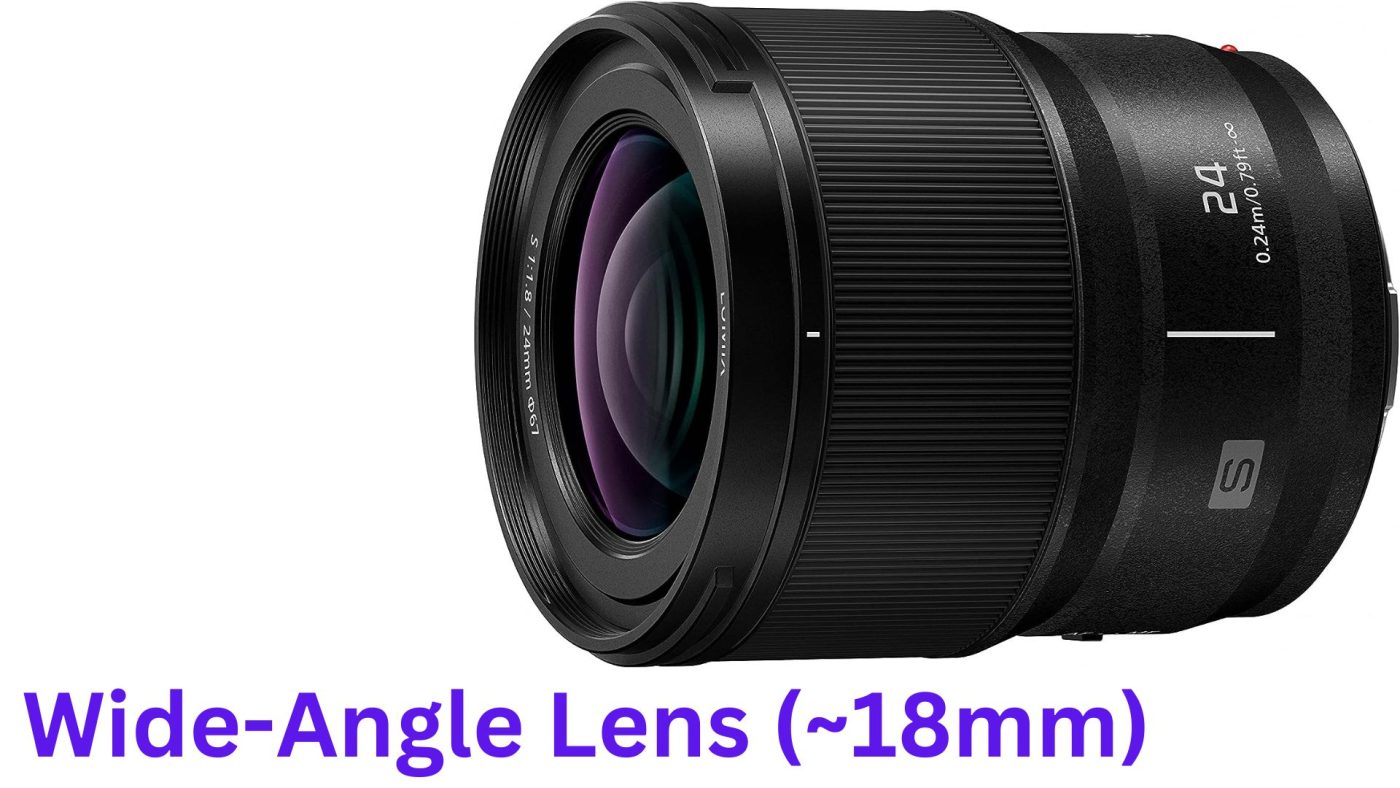
Wide-angle lens comes with an 18mm focal length that can fit more elements of the scene into the frame. These lenses cover a broader area than standard or telephoto zoom lenses. This makes them best for expansive landscapes, architecture, and interior photography.
However, you should avoid using this lens for closeup shots, especially for face clicks. This is because a wide-angle lens makes closer objects look closer and far objects more distant.
In terms of usage, wide-angle lenses are not widely used by photographers. For general photography, a standard zoom or prime lens suits best. Besides, wide-angle lenses are quite expensive. And if you want background blur clicks, then this is not the ideal choice for you. But this can work excellently for landscape clicks.
Check the list of wide-angle lenses from the below chart to get your suitable match-
| Wide-Angle Lens Recommendations | |
| Camera Brand | Recommended Models For Lens |
| Canon | Sigma 20mm f/1.4 for Canon EF Canon RF 15-35mm f/2.8L IS USM |
| Sony | Sony E 10-18mm f/4 OSS Sony FE 16-35mm f/2.8 GM |
| Panasonic | Panasonic Lumix G Vario 7-14mm f/4 ASPH Panasonic Lumix S Pro 16-35mm f/4 |
| Nikon | Nikon AF-P DX NIKKOR 10-20mm f/4.5-5.6G VR Nikon NIKKOR Z 14-30mm f/4 S |
Additional Lenses For Photography (Optional)
If you have the above four types of lenses in your collection and want to add more, check the below options-
- Macro Lens: If you require extreme close-up shots, the Macro lens is for you. These lenses allow you to capture intricate details of small subjects like insects, flowers, or textures. You will get high magnification and excellent sharpness at close shots. If you want to get into macro photography, a macro lens is an excellent choice to start.
- Fisheye Lenses: Fisheye lenses feature a twisted and distorted ultra-wide field of view. These lenses are often used for artistic and experimental photography. So, if you want to add a new dimension to your portfolio, include this lens in your bag.
- Pancake Lenses: Pancake lenses are known for their compact size and lightweight design. They usually have a fixed focal length, just like prime lenses. Besides, the simple design makes them convenient for casual shooting or situations where you want to keep your camera setup minimal and portable. However, they will not have zooming facilities like telephoto zoom lenses.
The Bottom Line
If you are planning to get into professional photography, you must have the above-mentioned four lenses in your collection. But, if you can’t afford to get all four at once, start with a standard zoom lens that works best for general photography. You can also begin with a prime lens if you are a beginner and don’t want to mass it up with zooming complexity. However, always make sure the lens is compatible with the camera you are using. Check this article to get the best camera list for professional photography- Which Is The Best Camera For Professional Photography? For affordable options; you can also have a look at this article- Best cheapest cameras for photography.
FAQs On Photography Lenses
How many lenses should a photographer have?
You should have at least three to four lenses to bring versatility to your photography skills. But having more options allows you to add dynamic clicks to your portfolio.
What kind of lens do photographers use?
The kind of lenses a photographer uses depends on his preference and the style of the photography. However, the four essential lenses they should carry are- a standard zoom lens, a telephoto zoom lens, a prime lens, and a wide-angle lens. Almost every type of autophagy is possible using these four primary lenses. But the door of adding more lenses to the collection is open for versatile photoshoots.
What is the most common lens?
Prime lenses of 50mm focal length are the most common lenses most photographers use. It is one of the most versatile lenses. Whether a beginner or a professional, you must have these lenses in your collection.

